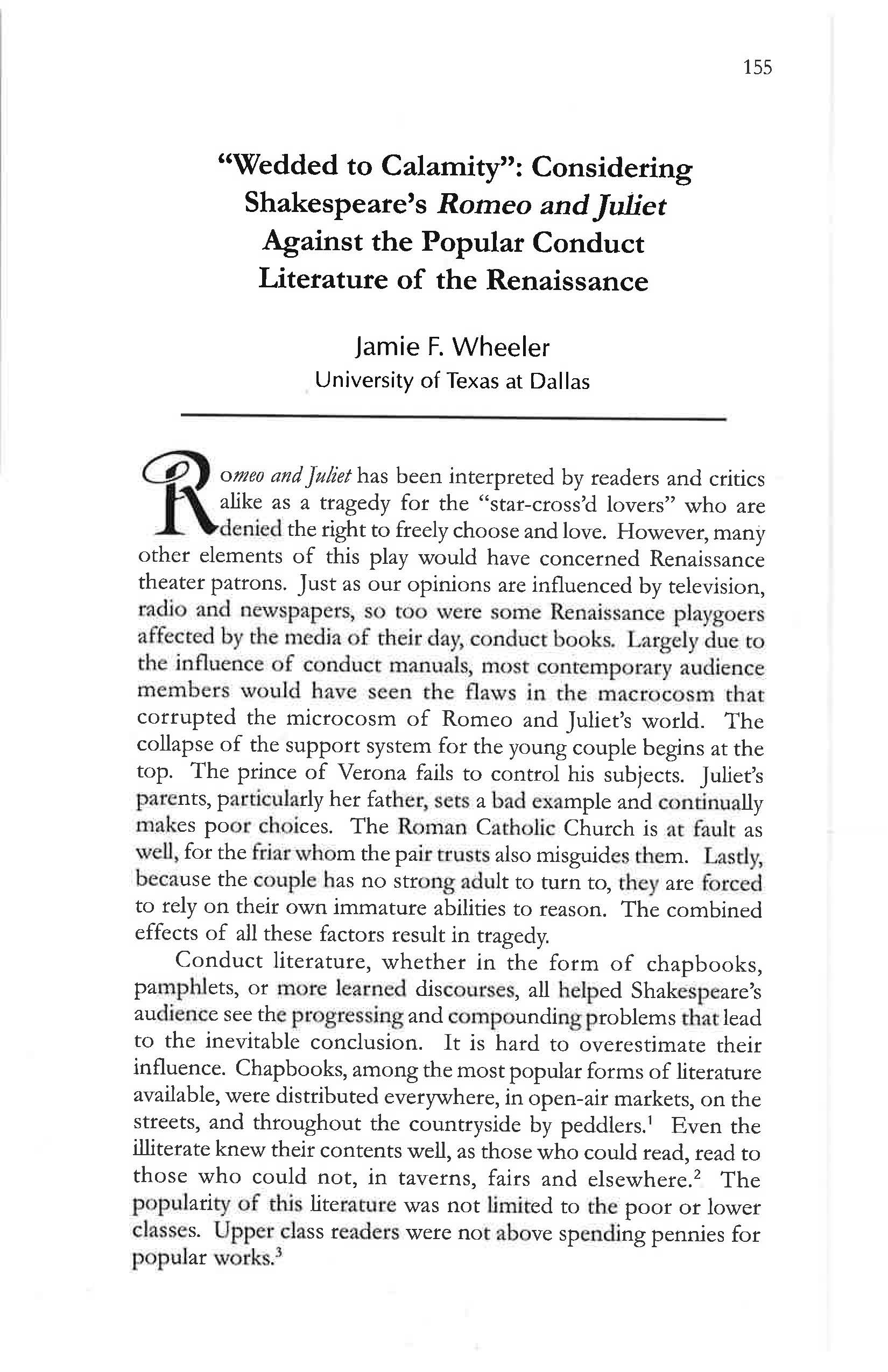"Wedded to Calamity": Considering Shakespeare's Romeo and Juliet Against the Popular Conduct Literature of the Renaissance
Main Article Content
Abstract
Romeo and Juliet has been interpreted by readers and critics alike as a tragedy for the “star-cross’d lovers” who are denied the right to freely choose and love. However, many other elements of this play would have concerned Renaissance theater patrons. Just as our opinions are influenced by television, radio and newspapers, so too were some Renaissance playgoers affected by the media of their day, conduct books. Largely due to the influence of conduct manuals, most contemporary audience members would have seen the flaws in the macrocosm that corrupted the microcosm of Romeo and Juliet’s world. The collapse of the support system for the young couple begins at the top. The prince of Verona fails to control his subjects. Juliet’s world. The collapse of the support system for the young couple begins at the top. The prince of Verona fails to control his subjects. Juliet’s parents, particularly her father, sets a bad example and continually make poor choices. The Roman Catholic Church is at fault as well, for the friar whom the pair trusts also misguides them. Lastly, because the couple has no strong adult to turn to, they are forced to rely on their own immature abilities to reason. The combined effects of all these factors result in tragedy.
